Why Crows Bring Gifts: The Science of Avian Intelligence
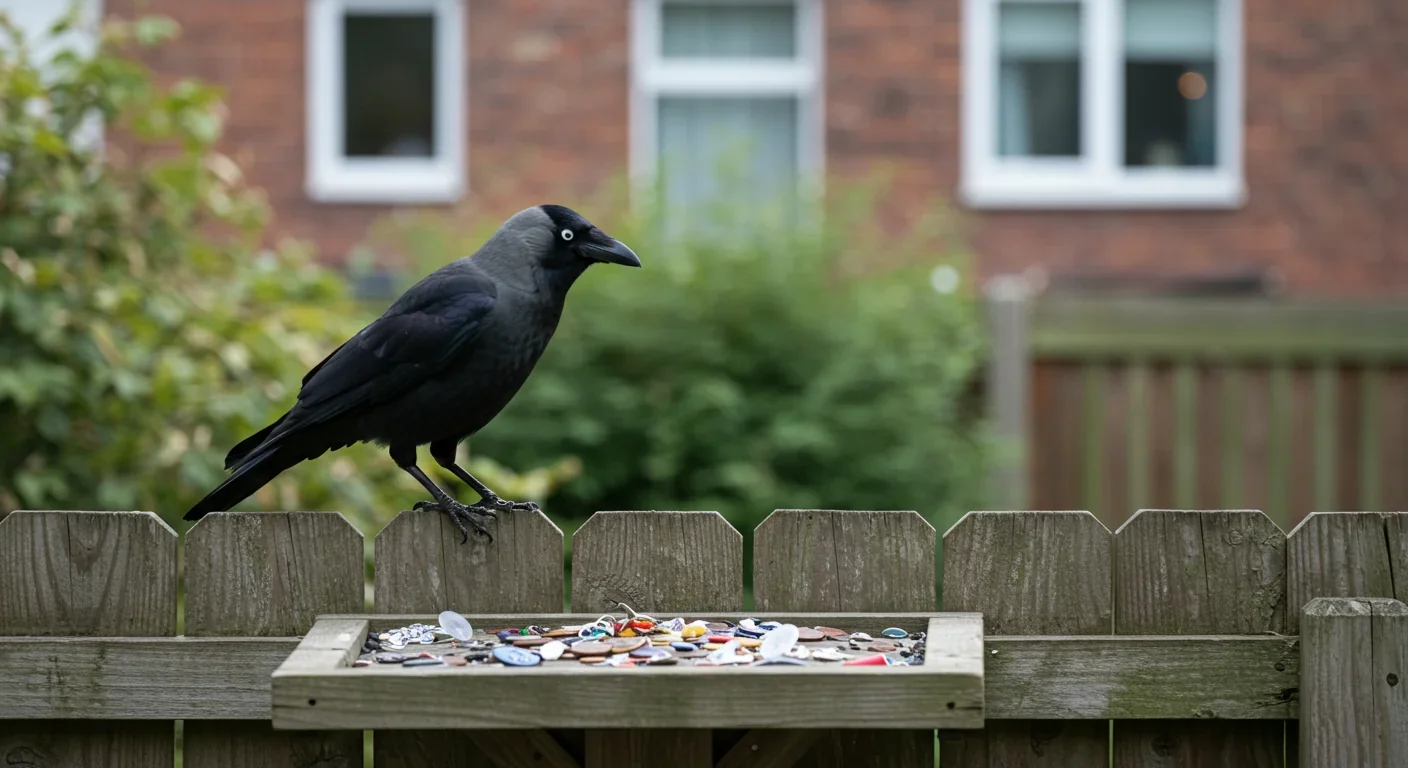
TL;DR: Corvids and parrots possess cognitive abilities rivaling primates, achieved through radically different neural architectures with densely packed neurons. New research reveals crows manufacture tools, use traffic infrastructure to crack nuts, and remember thousands of human faces, while parrots demonstrate abstract reasoning, learn through third-party imitation, and acquire vocabularies exceeding 100 words. These discoveries force a rethinking of conservation (protecting behavioral cultures, not just genetics), animal welfare (cognitive enrichment as essential as food), and AI design (distributed processing without central integration). The ethical implications are profound: if these birds possess child-level cognition, captivity without intensive enrichment constitutes psychological cruelty, and their cultural extinction matters as much as genetic loss.
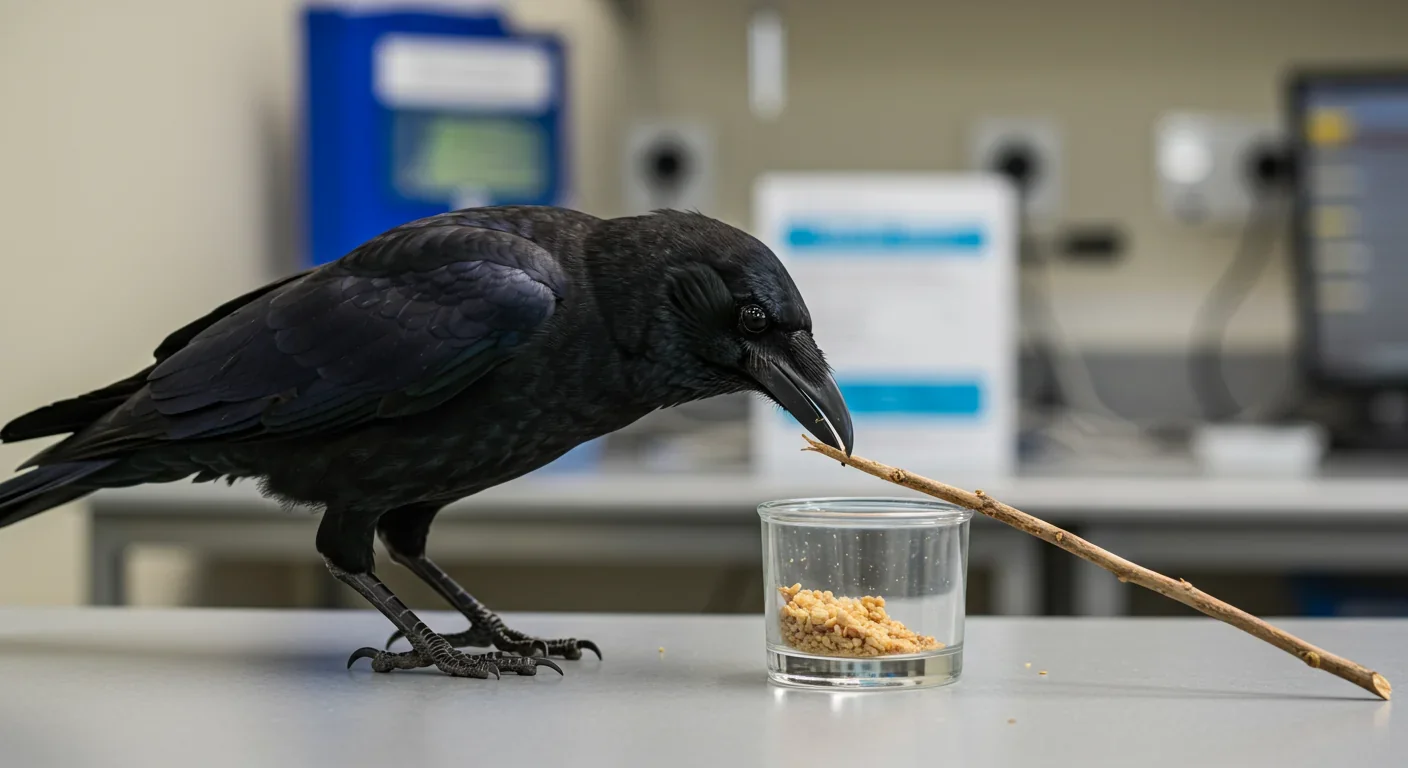
By 2030, artificial intelligence systems may be learning problem-solving strategies not from human programmers, but from crows dropping nuts onto highways and parrots teaching each other tricks through observation alone. What researchers have discovered about avian intelligence doesn't just challenge our assumptions about animal cognition—it's rewriting the evolutionary playbook on how intelligence emerges, persists, and spreads through populations. The birds outside your window possess cognitive abilities that would make most primates envious, and the implications stretch from conservation policy to the future of machine learning.
For decades, neuroscientists operated under a comfortable assumption: intelligence required a large brain with a layered neocortex, the hallmark of mammalian evolution. Birds, with their walnut-sized brains and completely different neural architecture, were dismissed as creatures of instinct.
Then came the experiments that shattered this paradigm.
In a laboratory at the University of Tübingen, researchers watched in astonishment as carrion crows—birds not naturally inclined to use tools—learned to manipulate sticks with the precision of a surgeon. Using thousands of trials tracked by pose-estimation software, scientists documented how these crows adjusted stick orientation mid-task, tossing and re-gripping until achieving perfect alignment with their beaks. The learning curve was steep, the mastery complete.
Meanwhile, at a research station in Tenerife, blue-throated macaws demonstrated something even more remarkable: third-party imitation, a cognitive feat previously documented only in humans. When one macaw watched another respond to human gestures by lifting a leg or spinning in place, the observer learned the behavior without direct training. The test group mastered an average of 3.7 out of five gestures—double the accuracy of control birds that never witnessed the demonstrations.
These weren't isolated curiosities. They represented a fundamental misunderstanding of how evolution builds intelligence. The avian pallium, despite lacking the layered structure of the mammalian cortex, contains over 10 billion neurons packed into a volume comparable to human cortical neuron counts. Birds achieve distributed processing through compartmentalized brain regions, offering an alternative neural architecture that produces comparable—and sometimes superior—cognitive outcomes.
The story of bird intelligence begins 66 million years ago, when an asteroid impact eliminated the non-avian dinosaurs and created ecological opportunities for their feathered descendants. But the cognitive toolkit corvids and parrots wield today emerged much more recently.
Just as the invention of writing 5,000 years ago transformed human civilization by enabling knowledge transmission across generations, corvids and parrots independently evolved mechanisms for cultural learning—the ability to acquire and share complex behaviors through social observation rather than genetic inheritance.
Consider the trajectory of tool use. For most of vertebrate history, only a handful of species manipulated objects to solve problems. Primates developed tool use through millions of years of selection for manual dexterity and large frontal lobes. Corvids, however, evolved comparable abilities through a completely different route: exceptional visual processing, precise beak control, and cognitive flexibility.
New Caledonian crows manufacture tools with specific functional designs, fashioning hooks from twigs and leaves to extract insects from crevices. What's remarkable isn't just the behavior—it's the manufacturing process. These crows don't simply find suitable sticks; they modify raw materials with deliberate, sequential actions that reveal understanding of cause and effect. Young crows learn these techniques through observation, creating regional "cultures" with distinct tool designs passed down through generations.
The historical parallel is striking. Just as human cultures developed distinct technologies—the bow and arrow in some regions, the blowgun in others—corvid populations have evolved local traditions. Crows in Tokyo have learned to raid garbage bags by observing successful techniques in their social groups. Urban crows across multiple continents independently discovered they could drop nuts onto roadways, wait for cars to crack them open, then retrieve the meal when traffic lights change.
This represents cognitive flexibility that early comparative psychologists never anticipated. The field of comparative psychology itself nearly died in mid-20th century America, marginalized by behaviorists who studied rats and pigeons in sterile laboratory conditions. Ethologists working in natural environments kept the flame alive, documenting complex behaviors that laboratory paradigms missed entirely. Only in the 21st century has the scientific mainstream acknowledged what field researchers observed decades earlier: intelligence manifests in wildly different forms across the animal kingdom.
How does a brain smaller than a golf ball rival the cognitive abilities of primates with brains hundreds of times larger?
The answer lies in neural density and architectural efficiency. The avian pallium—the brain region responsible for higher cognition—packs neurons far more densely than mammalian cortices. Where mammals spread processing power across layered cortical sheets connected by a thick corpus callosum, birds concentrate computational resources in compact, highly interconnected nuclei.
This creates an evolutionary puzzle corvids solve elegantly: they lack a corpus callosum yet demonstrate integrated, socially sophisticated behavior. Split-brain studies in humans reveal how devastating the loss of inter-hemispheric communication can be. Patients whose corpus callosum is severed sometimes exhibit "alien hand syndrome," with one hand acting independently of conscious control. Yet corvids, which evolved without this neural bridge, show no such fragmentation.
The implications extend beyond neuroscience into philosophy of mind. If consciousness and unified experience don't require the mammalian architecture we've assumed essential, then intelligence can emerge through radically different design principles. This matters for conservation—recognizing that corvids experience the world through a sophisticated perceptual and cognitive system means their welfare needs extend beyond basic survival. It also matters for artificial intelligence, where researchers increasingly look to biological systems for architectural inspiration.
The nidopallium caudolaterale, a region in the corvid brain, performs functions analogous to the mammalian prefrontal cortex: working memory, attention control, and decision-making. When crows view familiar human faces, this region activates alongside the amygdala in patterns strikingly similar to primate facial recognition networks. The convergent evolution of specialized face-processing circuits suggests that certain cognitive problems have optimal neural solutions, regardless of evolutionary lineage.
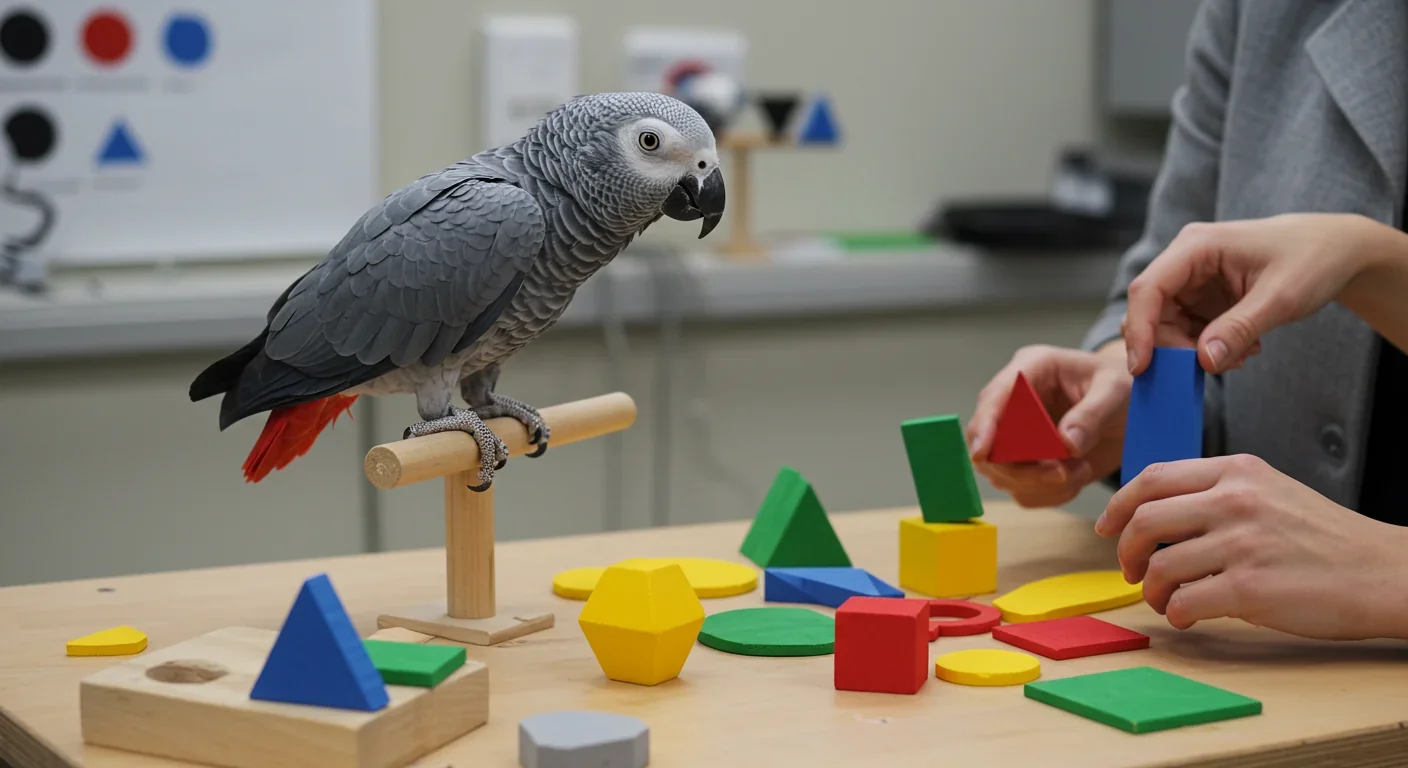
The cognitive achievements of corvids and parrots span domains once considered exclusively human.
Tool Use and Manufacture: New Caledonian crows don't just use tools—they innovate. In controlled experiments, these birds bent wire into hooks to retrieve food from containers, demonstrating creative problem-solving that surprised researchers who believed such improvisation required primate-level cognition. The crows understood the functional requirements (a hook shape to reach food), the material properties (wire can be bent), and the causal relationships (hook retrieves food). This represents abstract reasoning about objects and their affordances.
Kea parrots from New Zealand solve mechanical puzzles requiring understanding of sequential operations. In studies where multiple locking mechanisms must be manipulated in specific order, keas demonstrate systematic problem-solving rather than trial-and-error fumbling. They can retain puzzle solutions for up to three years without practice—a long-term memory capacity that rivals primates and exceeds most mammals.
Language and Abstract Concepts: African grey parrots achieve language comprehension that borders on the uncanny. Alex, the famous subject of Dr. Irene Pepperberg's three-decade study, acquired a vocabulary exceeding 100 words. But Alex didn't merely mimic—he understood. When shown objects and asked about shape, color, or material, Alex labeled them correctly. He understood concepts like "bigger," "smaller," "same," and "different." He could count to six and recognize quantities, demonstrating numerical cognition comparable to young children.
Perhaps most remarkably, Alex exhibited what linguists call two-way communication: understanding the turn-taking of conversation and the syntax of questions. He used language referentially, asking "What color?" when looking in a mirror—an existential inquiry about self-perception. When training sessions became repetitive, Alex showed frustration, deliberately miscounting during color-counting tasks until researchers changed the activity. This emotional response to cognitive understimulation reveals that parrots don't just need physical care; they require mental engagement.
The model-rival training technique Pepperberg developed proves essential for unlocking parrot cognition. In this approach, a trainer and a rival model the desired behavior, allowing the parrot to observe interactive communication. Rewards consist of the actual labeled object rather than food, linking perception and cognition. This two-way system mirrors how human children acquire language through social interaction—a sharp departure from the behaviorist conditioning that dominated animal training for decades.
Social Cognition and Theory of Mind: Corvids demonstrate sophisticated understanding of other minds. In experiments on caching behavior, crows adjust their food-hiding strategies based on whether they've been observed. A crow that has previously stolen from caches becomes more cautious about its own caching when potential thieves are watching—suggesting it attributes knowledge and intentions to other birds. This capacity for perspective-taking, sometimes called "theory of mind," was long considered a uniquely human trait.
Strategic deception provides even stronger evidence. Crows create decoy caches, placing fake food stores to mislead potential thieves while hiding real caches elsewhere. This requires modeling another individual's knowledge state and deliberately manipulating it—a level of social intelligence that indicates self-awareness and mental simulation of others' perspectives.
Facial Recognition and Cultural Transmission: Crows recognize thousands of individual human faces and maintain these memories for years. In landmark studies at the University of Washington, researchers wore distinctive masks while capturing and banding crows. Years later, when wearing the same "dangerous" masks, researchers were mobbed and scolded by crows—including young birds that hadn't experienced the original capture. The knowledge of which humans pose threats spreads through crow populations via social learning and alarm calls.
This cultural transmission of information parallels human societies sharing knowledge across generations. Young crows learn which foods are safe, which predators to avoid, and which humans are dangerous through observation and communication with experienced adults. The parallel to human cultural evolution is striking: both species transmit adaptive information socially, creating local knowledge traditions that enhance survival.
Recognizing the cognitive sophistication of corvids and parrots forces a cascade of societal and scientific recalibrations.
Conservation Must Protect Cultures, Not Just Genomes: Traditional conservation focuses on genetic diversity—preserving enough breeding individuals to maintain healthy populations. But corvids and parrots possess behavioral cultures that can be lost even while genetic diversity remains intact. When a population of New Caledonian crows with unique tool-making traditions disappears, the genetic loss may be minimal but the cultural extinction is total.
Esha Haldar, lead author of the macaw imitation study, emphasizes this point: "Conservation strategies often focus on protecting species or genetic pools, with less emphasis on preserving the social structures that underpin transmission of social information that is crucial for survival." For blue-throated macaws—critically endangered with only 208-303 adults remaining in the wild—protecting social groups that can transmit learned behaviors may be as important as maintaining breeding populations.
Habitat protection takes on new dimensions when cognitive needs are considered. Corvids require not just food and nesting sites but complex environments that support problem-solving, social learning, and cognitive development. Urban planning that accounts for crow intelligence means preserving mature trees for roosting and foraging, maintaining green corridors for movement, and tolerating the mess of communal roosts.
Animal Welfare Enters the Cognitive Age: The traditional "five freedoms" of animal welfare—freedom from hunger, discomfort, pain, fear, and freedom to express normal behavior—prove inadequate for cognitively complex species. As philosopher Walter Veit notes, "Understanding what the world is like for an animal means understanding what feels good and bad for them."
For corvids and parrots, this means recognizing that cognitive understimulation causes suffering comparable to physical deprivation. Captive parrots lacking mental enrichment exhibit stress behaviors: feather plucking, stereotypic pacing, aggression. These aren't merely behavioral problems—they're symptoms of psychological distress in animals with cognitive needs as real as their nutritional requirements.
Heather Browning, lecturer in philosophy at the University of Southampton, outlines welfare implications: "Their good memories may mean they suffer longer from a negative experience, neophobia will mean novel objects should be introduced slowly, their social abilities mean they should be housed in groups." Each cognitive capacity creates corresponding welfare obligations.
The pet industry faces a reckoning. Between 1982 and 2001, nearly 660,000 African grey parrots were sold internationally, with over 300,000 dying during capture or transport. Those that survive often face decades of cognitive deprivation in cages barely larger than their wingspans. Recognizing parrot intelligence means acknowledging that keeping these birds as pets without extensive enrichment and social interaction constitutes a form of psychological torture.
Education and Public Engagement: Bird intelligence offers unparalleled opportunities for teaching evolutionary biology, neuroscience, and cognitive science. The fact that corvids and parrots achieve primate-level cognition through completely different neural architectures demonstrates evolution's creative power—the same adaptive challenges (social living, flexible foraging, predator avoidance) producing convergent cognitive solutions through divergent mechanisms.
School programs incorporating live bird demonstrations see remarkable engagement. Watching a crow solve a multi-step puzzle or a parrot answer questions creates visceral understanding that lectures about animal cognition cannot match. These experiences reshape student attitudes toward non-human intelligence and environmental stewardship.
The recognition of avian cognitive sophistication unlocks practical and theoretical opportunities spanning multiple domains.
Biomimicry and Artificial Intelligence: Engineers and computer scientists increasingly look to biological systems for design principles, and bird cognition offers rich inspiration. The distributed processing of the avian brain—achieving sophisticated computation without a central integrator—mirrors challenges in distributed AI systems and swarm robotics.
Crow problem-solving, which relies on simple behavioral rules producing complex emergent solutions, parallels multi-agent AI architectures. When a crow drops a nut on a road, waits for a car to crush it, then monitors traffic patterns to retrieve the meal safely, it demonstrates sequential planning and environmental exploitation that AI researchers struggle to implement in robotic systems.
The high neural density of bird brains suggests that computational power in artificial systems may depend more on connection efficiency than absolute size—a principle relevant for developing compact, energy-efficient processors. If birds pack billions of neurons into cubic centimeters through dense connectivity rather than volume expansion, perhaps neuromorphic chips can achieve similar efficiency gains.
Ecological Understanding and Ecosystem Services: Corvids function as ecosystem engineers through nest building, seed caching, and carrion cleanup. Their intelligence amplifies these ecological roles. Crows that remember thousands of cache locations across months contribute substantially to seed dispersal and plant regeneration. Their selective caching—preferring larger, more nutritious seeds—shapes plant community composition.
Understanding corvid foraging intelligence helps predict their impacts on agricultural systems and urban environments. Smart birds exploit anthropogenic food sources with remarkable efficiency, but they also provide pest control services by consuming insects and rodents. Urban planning that accommodates rather than excludes corvids can harness these services while mitigating conflicts.
Cognitive Enrichment Applications: Research on bird cognition directly informs enrichment practices for captive birds in zoos, sanctuaries, and homes. Puzzle feeders that require sequential problem-solving, social learning opportunities where birds observe trained demonstrators, and variable environments that reward exploration all derive from cognitive research.
The model-rival training technique developed for Alex now benefits parrots worldwide, providing mental stimulation through two-way communication. Training sessions using clicker training and target training—where birds learn to touch specific targets for rewards—build behavioral repertoires while exercising cognitive flexibility. Short, frequent sessions (5-15 minutes) prevent the frustration Alex displayed during repetitive tasks while maintaining engagement.
For bird owners, cognitive research provides actionable guidance: rotate puzzle toys to maintain novelty, allow daily flight time to satisfy natural foraging instincts, provide opportunities for social interaction with conspecifics or attentive humans, and avoid punitive training methods that damage the trust essential for cooperative learning.
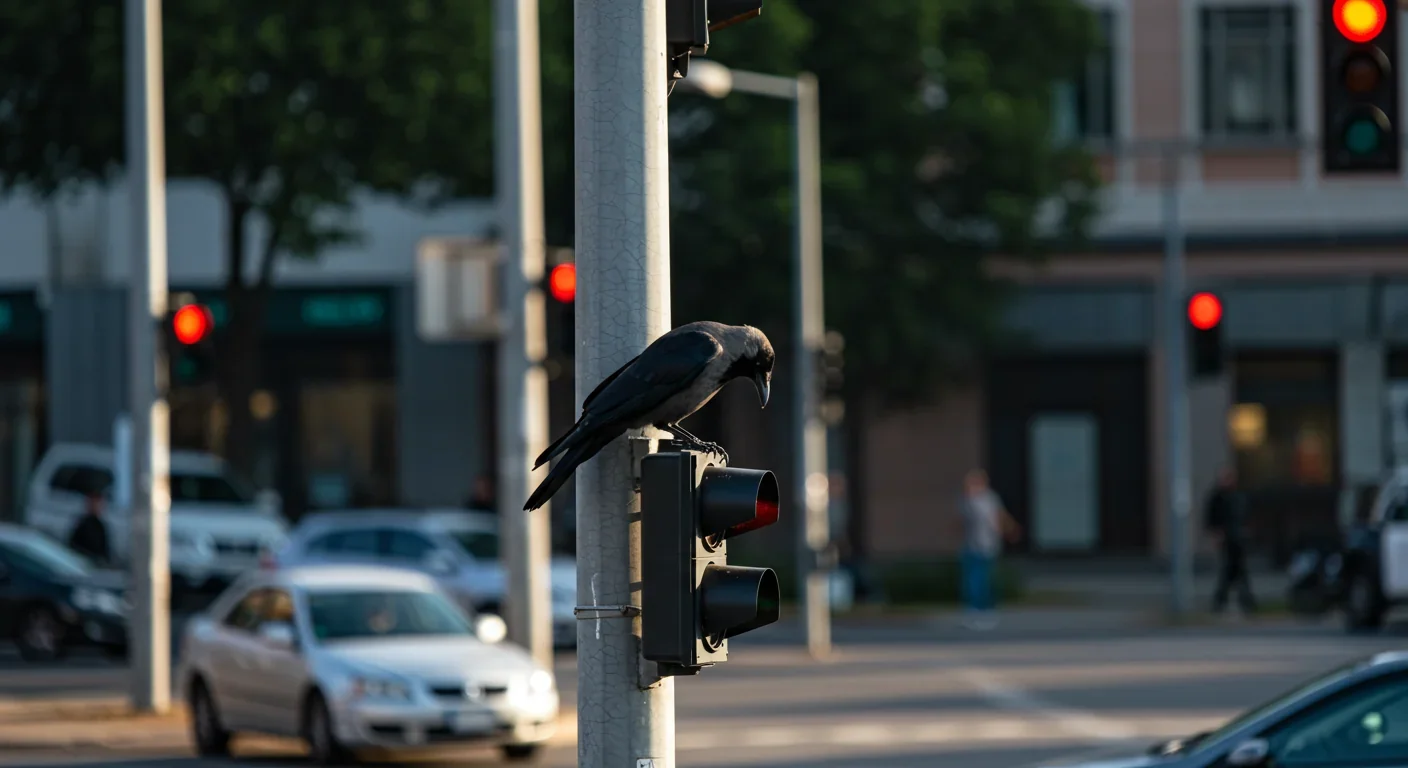
Recognition of bird intelligence creates uncomfortable ethical obligations and highlights ongoing harms.
The Captivity Crisis: If corvids and parrots possess cognitive abilities comparable to young children, what justifies keeping them in captivity for human entertainment or companionship? The question admits no easy answer.
Parrots in captivity often outlive their owners—African greys can live 60+ years—passing through multiple homes with variable care standards. Each transition brings stress, potential trauma, and loss of learned social behaviors. A parrot that bonds with a human caregiver experiences that relationship with the emotional depth of a young child. Separation represents genuine loss.
Zoos argue that captive populations serve conservation functions, maintaining genetic reservoirs and funding field conservation through visitor revenue. But cognitive research reveals that simply keeping birds alive doesn't preserve what makes them remarkable. Without opportunities for social learning, cultural transmission, and cognitive challenges, captive corvids and parrots become shadows of their wild counterparts.
Cognitive Burden and Negative Welfare: Superior intelligence creates vulnerability to psychological suffering. Corvids' exceptional memories mean they may ruminate on negative experiences longer than less cognitively sophisticated species. Their neophobia—fear of novel objects—requires that environmental changes be introduced gradually, or stress results.
Social intelligence creates dependency on group structures. Isolated corvids and parrots experience loneliness that manifests in behavioral pathologies. Yet maintaining appropriate social groups in captivity proves challenging: birds must be compatible, space must allow natural social distance, and resources must prevent competition-induced stress.
The paradox cuts deep: the very cognitive abilities that make corvids and parrots fascinating also make them more susceptible to suffering in captive conditions.
Exploitation and Trade: Despite international protections, illegal trade in parrots continues. Poachers target the most intelligent, charismatic species—those with the greatest cognitive needs and highest vulnerability to captivity stress. The death toll is staggering: over 300,000 African greys died during capture or transport in the late 20th century trade boom.
Even legal trade raises concerns. Breeding programs produce birds psychologically adapted to human interaction but behaviorally impoverished compared to wild counterparts. Hand-raised parrots imprint on humans, losing the capacity for normal conspecific relationships. Is creating animals whose welfare depends entirely on intensive human care ethical when that care is so rarely provided?
Unintended Consequences of Recognition: As bird intelligence gains recognition, demand for avian pets may increase rather than decrease. People want to experience firsthand the cognitive abilities they read about, driving market demand that conservation status alone doesn't suppress.
Education campaigns face a delicate balance: showcasing bird intelligence to build appreciation while emphasizing that cognitive sophistication makes these animals unsuitable as casual pets. The message must be nuanced—respect their intelligence by leaving them in the wild or providing expert care, not by treating them as entertaining curiosities.
Human relationships with intelligent birds vary dramatically across cultures, shaped by history, ecology, and philosophical traditions.
Indigenous Knowledge Systems: Many indigenous cultures recognized corvid and parrot intelligence millennia before Western science. Pacific Northwest tribes incorporated ravens into creation stories as trickster figures—beings of supernatural cleverness who shape the world through wit. These narratives encode observations of raven problem-solving, social dynamics, and adaptability.
Australian Aboriginal cultures attribute similar cleverness to corvids and cockatoos, with Dreamtime stories featuring birds as culture heroes. The ecological knowledge embedded in these traditions—understanding of bird behavior, social structures, and seasonal patterns—represents sophisticated ethological observation accumulated over thousands of years.
Contemporary conservation increasingly incorporates indigenous knowledge. Traditional ecological knowledge about parrot nesting sites, seasonal movements, and social structures complements scientific research, often revealing patterns that short-term studies miss.
Asian Perspectives: In Japan, crows inspire both admiration and frustration. Tokyo's crows, famous for raiding garbage and using urban infrastructure as tools, embody the tension between respect for intelligence and conflict over resources. Japanese media regularly features crow problem-solving, and research on crow cognition receives substantial funding.
Cultural attitudes toward intelligence matter for conservation. In regions where corvids are viewed as pests, persecution threatens populations. Where they're recognized as intelligent neighbors, coexistence strategies emerge: crow-proof garbage systems, intentional feeding stations to reduce conflict, and public education about crow ecology.
European Research Traditions: European ethology—the study of animal behavior in natural contexts—provided the intellectual foundation for contemporary corvid cognition research. Researchers like Konrad Lorenz and Niko Tinbergen emphasized observation over laboratory manipulation, documenting complex social behaviors that laboratory paradigms couldn't capture.
This tradition continues in field stations studying corvids across Europe. Long-term studies tracking individual birds across lifespans reveal cultural transmission of tool use, regional dialects in vocalizations, and social structures that shape cognitive development. The European emphasis on natural behavior complements American laboratory approaches, providing a complete picture of corvid intelligence.
Latin American Parrot Conservation: Countries with high parrot diversity face acute conservation challenges. Habitat destruction from agriculture and development eliminates nesting sites. Illegal trade targets the most endangered species precisely because rarity increases value. Conservation programs increasingly recognize that protecting parrot intelligence means preserving social groups and behavioral cultures.
Community-based conservation programs enlist local people as guardians of parrot populations. When communities benefit economically from ecotourism focused on wild parrots, they become stakeholders in preservation rather than participants in exploitation. These programs succeed when they recognize parrots as cognitively complex beings whose welfare matters intrinsically, not merely as resources to be managed.
Understanding bird intelligence prepares us for a future where non-human cognition commands greater ethical and practical consideration.
Cognitive Ethology Literacy: As recognition of animal intelligence grows, basic literacy in cognitive ethology becomes essential for policymakers, educators, and engaged citizens. Understanding how to evaluate evidence for animal cognition—distinguishing between anthropomorphic projection and rigorous inference—matters for making informed decisions about animal welfare, conservation, and research ethics.
The framework developed by Niko Tinbergen remains invaluable: analyzing behavior through four complementary questions about proximate mechanisms (how does it work?), development (how does it emerge?), evolutionary history (where did it come from?), and adaptive function (what is it for?). Applying this framework prevents both over-interpretation of animal behavior and dismissive skepticism.
Ethical Frameworks for Non-Human Intelligence: Traditional ethics centered on human exceptionalism—the assumption that humans alone possess morally relevant cognitive capacities like self-awareness, future planning, and emotional depth. Corvid and parrot cognition demolishes this assumption, requiring ethical frameworks that grant moral consideration based on cognitive capacity rather than species membership.
Philosophers developing animal ethics must grapple with questions like: If a parrot demonstrates self-awareness and can suffer psychological harm from isolation, what rights does it possess? If corvids transmit cultural knowledge across generations, does destroying a local population constitute cultural genocide analogous to human cultural destruction?
These aren't abstract philosophical exercises—they shape concrete policy on animal research, captivity standards, trade regulations, and habitat protection.
Designing for Multi-Species Futures: Urban planning increasingly recognizes that cities are multi-species ecosystems. Designing urban spaces that accommodate corvid intelligence means providing cognitive as well as physical resources: complex environments supporting problem-solving, trees enabling social gathering, water features for bathing and play.
Architecture that assumes only human use misses opportunities for enriching urban biodiversity. Green roofs provide corvid foraging habitat. Building designs that prevent bird collisions while allowing nesting acknowledge birds as legitimate urban residents. These adaptations don't sacrifice human needs—they recognize that flourishing cities support diverse life.
Responsible Stewardship Practices: For those who work with birds professionally or keep them as companions, cognitive research demands higher standards. Avian veterinarians must address psychological as well as physical health. Zoos must provide cognitive enrichment equivalent to the mental challenges wild birds encounter. Bird owners must commit to daily interaction, environmental complexity, and lifelong care.
The alternative—maintaining current practices despite knowing they cause psychological suffering—becomes ethically indefensible once we recognize the cognitive being behind the feathers.
Within the next decade, you'll likely see corvid cognition research influencing AI development, urban planning incorporating bird intelligence into design, and animal welfare laws recognizing cognitive needs as fundamental rights. The birds at your feeder aren't simple creatures operating on instinct—they're intelligent beings navigating complex social and physical worlds with sophistication that rivals our primate cousins.
The question isn't whether corvids and parrots are intelligent. That debate is settled. The question is whether humanity will rise to the ethical and practical obligations this recognition demands—protecting not just their bodies and genes, but their minds, cultures, and cognitive welfare. The crows remembering your face, the parrots learning from their peers, the ravens planning tomorrow's meals—they're watching to see what we'll do next.

Saturn's iconic rings are temporary, likely formed within the past 100 million years and will vanish in 100-300 million years. NASA's Cassini mission revealed their hidden complexity, ongoing dynamics, and the mysteries that still puzzle scientists.

Scientists are revolutionizing gut health by identifying 'keystone' bacteria—crucial microbes that hold entire microbial ecosystems together. By engineering and reintroducing these missing bacterial linchpins, researchers can transform dysfunctional microbiomes into healthy ones, opening new treatments for diseases from IBS to depression.
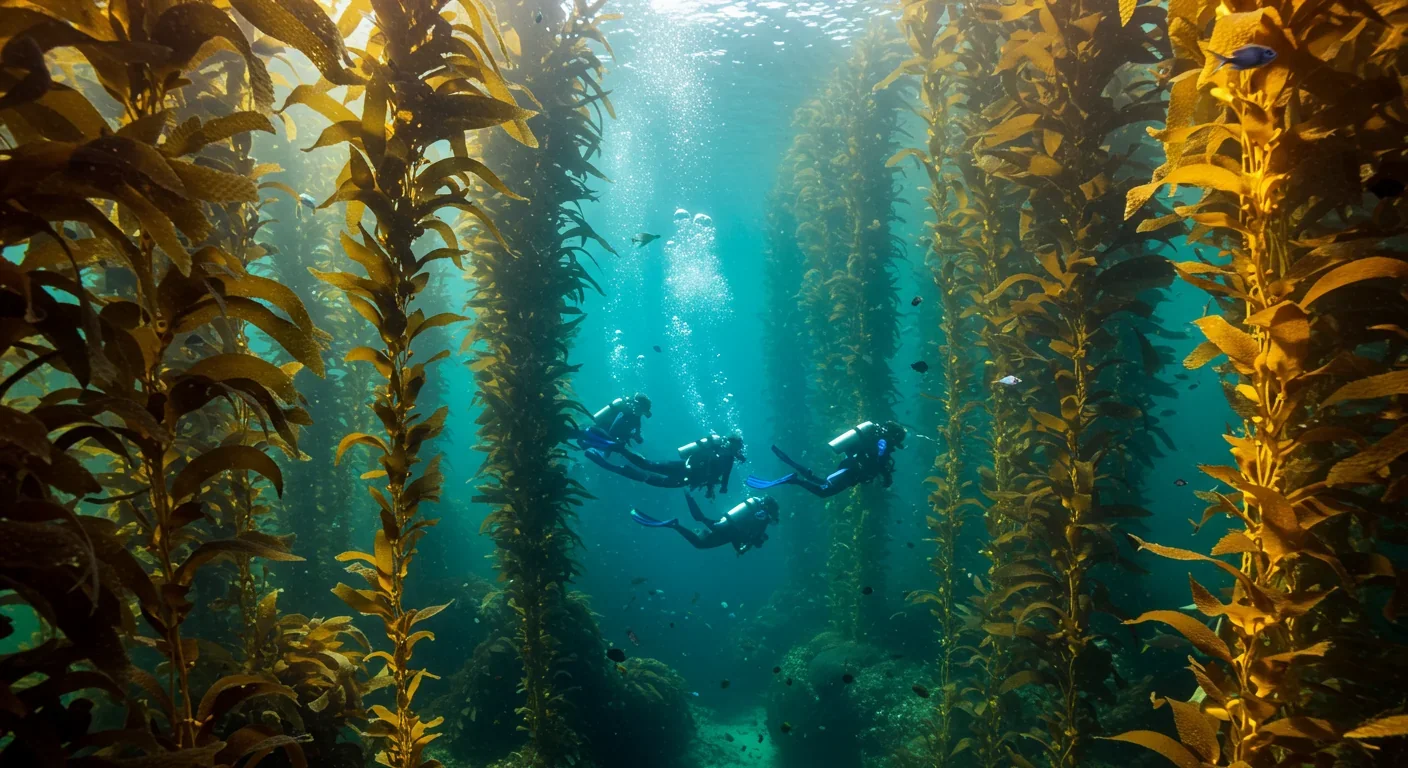
Marine permaculture—cultivating kelp forests using wave-powered pumps and floating platforms—could sequester carbon 20 times faster than terrestrial forests while creating millions of jobs, feeding coastal communities, and restoring ocean ecosystems. Despite kelp's $500 billion in annual ecosystem services, fewer than 2% of global kelp forests have high-level protection, and over half have vanished in 50 years. Real-world projects in Japan, Chile, the U.S., and Europe demonstrate economic via...

Our attraction to impractical partners stems from evolutionary signals, attachment patterns formed in childhood, and modern status pressures. Understanding these forces helps us make conscious choices aligned with long-term happiness rather than hardwired instincts.

Crows and other corvids bring gifts to humans who feed them, revealing sophisticated social intelligence comparable to primates. This reciprocal exchange behavior demonstrates theory of mind, facial recognition, and long-term memory.

Cryptocurrency has become a revolutionary tool empowering dissidents in authoritarian states to bypass financial surveillance and asset freezes, while simultaneously enabling sanctioned regimes to evade international pressure through parallel financial systems.

Blockchain-based social networks like Bluesky, Mastodon, and Lens Protocol are growing rapidly, offering user data ownership and censorship resistance. While they won't immediately replace Facebook or Twitter, their 51% annual growth rate and new economic models could force Big Tech to fundamentally change how social media works.